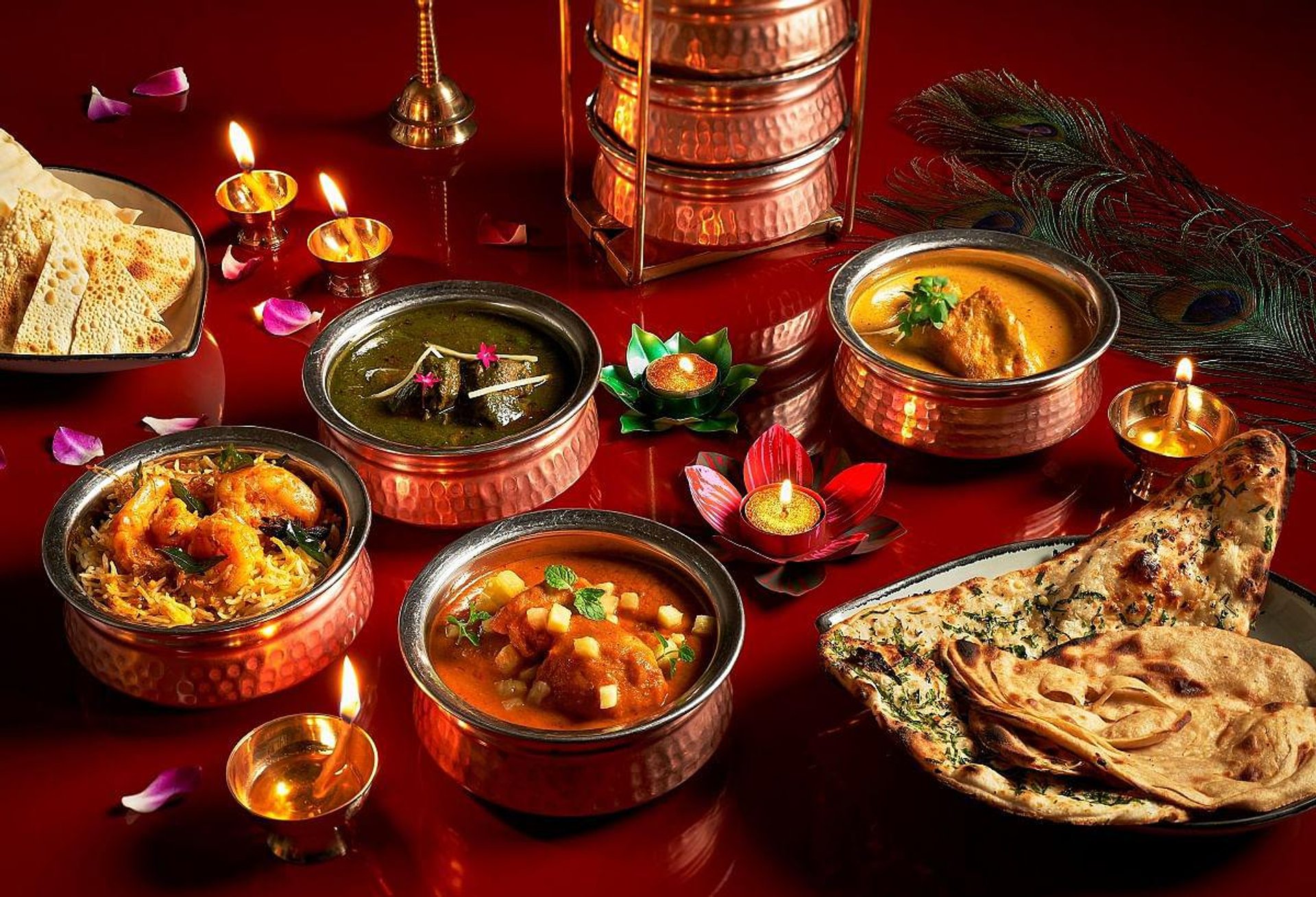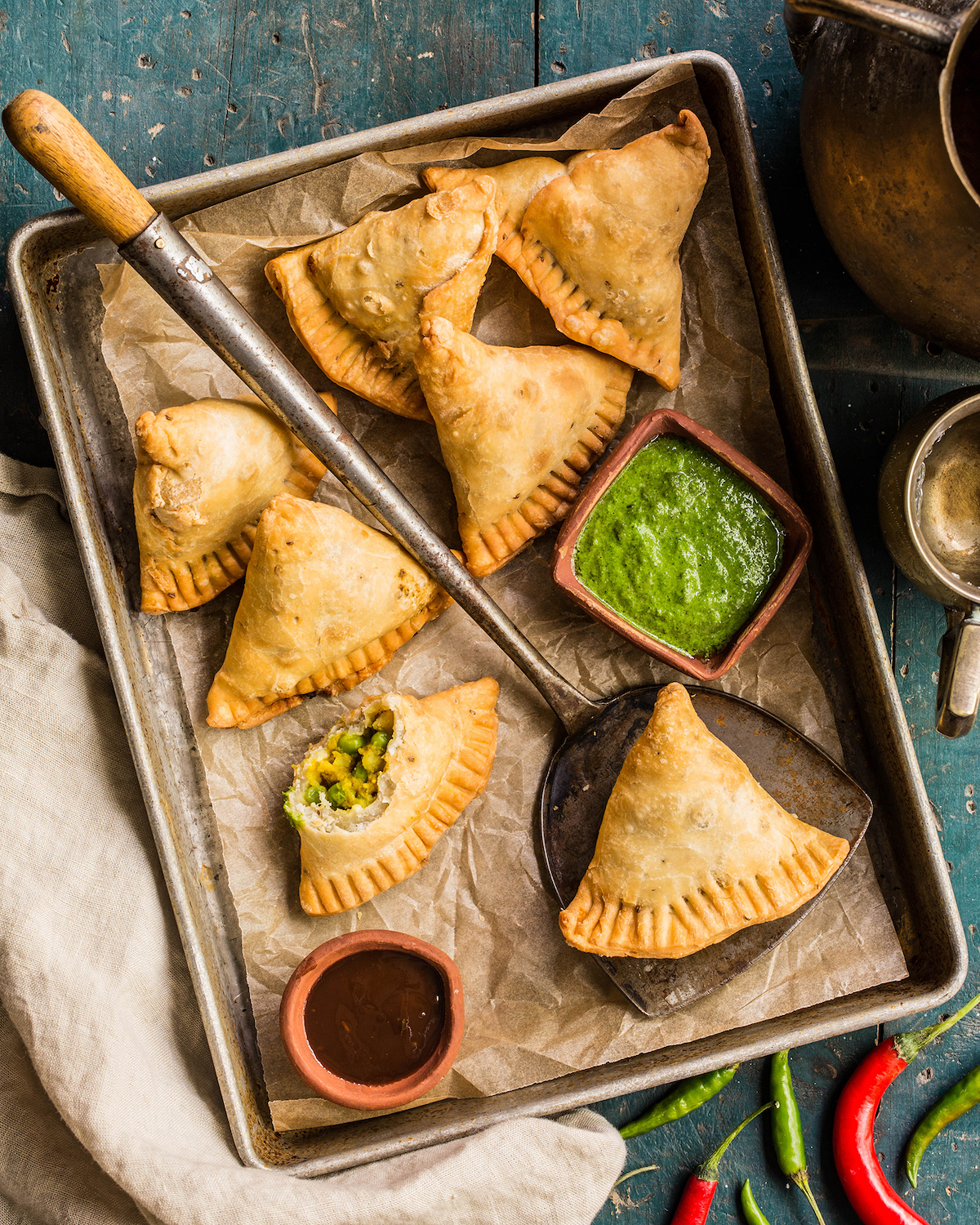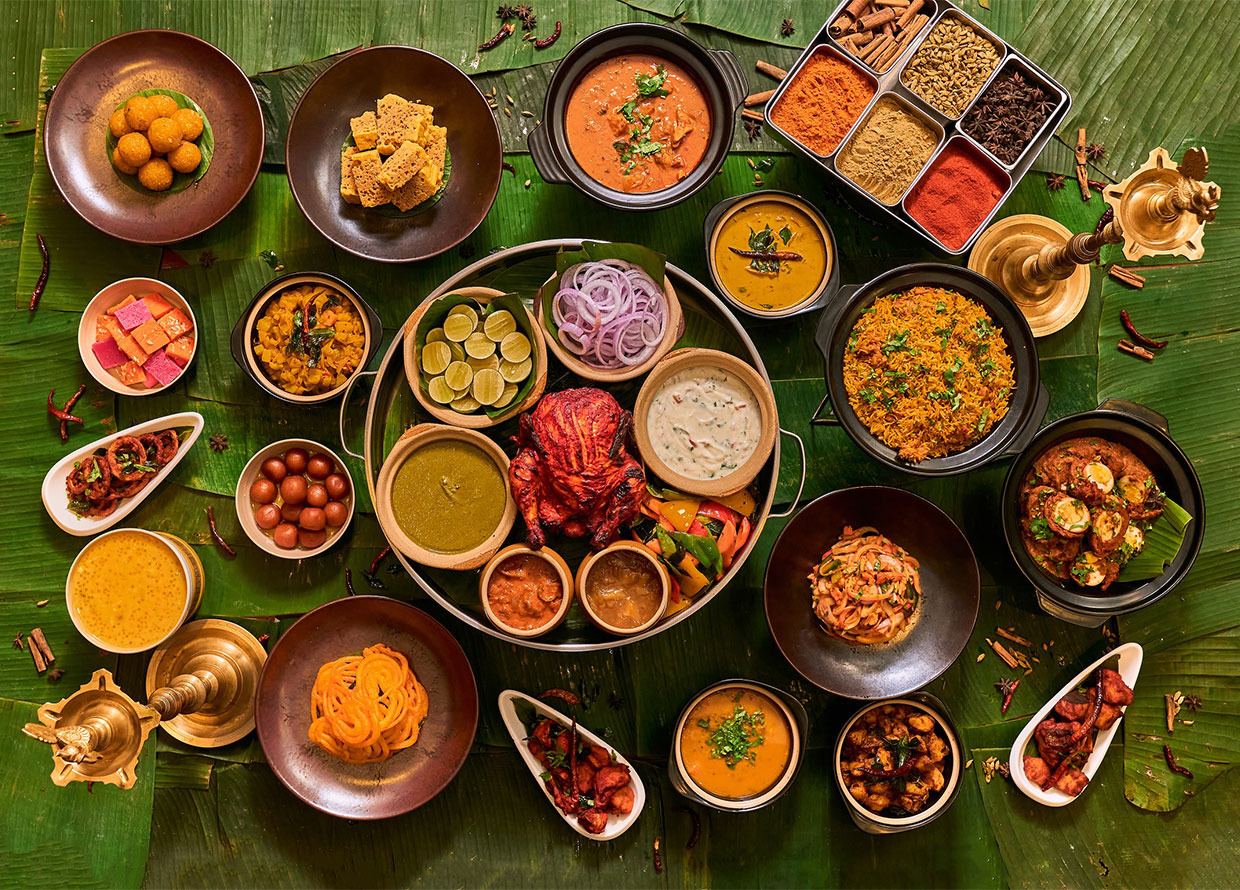DEEPAVALI DELIGHTS

The Sacred Role of Food in Deepavali
Food during Deepavali is not simply prepared for sustenance. It’s a symbol of abundance, a gift of hospitality, and a reflection of tradition that binds families and communities together. The act of cooking itself becomes a ritual, where recipes passed down through generations are lovingly recreated and shared. Families begin preparations days in advance, carefully selecting ingredients, grinding spices, and planning feasts that balance the savory and sweet.

Kitchens transform into vibrant spaces of joy and collaboration. The air grows heavy with the scent of roasted spices, fragrant curries bubbling on the stove, and trays of sweets cooling on countertops. Murukku is twisted into delicate spirals, ladoos are rolled into golden orbs, and kesari is garnished with glistening cashews and raisins. Each dish is more than a delicacy, it’s a story of heritage, patience, and devotion.
On the day of celebration, food takes center stage. Families open their homes to neighbors and friends, offering generous platters as an expression of goodwill and unity.
Sharing a meal becomes an act of love and inclusivity, embodying the essence of Deepavali, the triumph of light, joy, and togetherness over darkness.

Deepavali, also known as the Festival of Lights, is one of the most cherished and meaningful celebrations for Hindu communities across the globe. The festival marks the victory of light over darkness, of good over evil, and of knowledge over ignorance. Homes are decorated with flickering oil lamps, families gather in colorful attire, and prayers are offered with devotion and joy.
While the radiant lights and sparkling fireworks paint the night sky, there’s another essential part of the celebration that takes place within every home. That’s the sharing of food. Deepavali cuisine is a feast that embodies heritage, love, and generosity. Every dish carries a story, a memory, and a cultural significance that makes the celebration complete.
The process is as meaningful as the result, for cooking together strengthens family bonds and allows treasured recipes to be passed down through generations. Children often learn to make their very first festive sweet or savory snack under the watchful eyes of mothers and grandmothers. In this way, Deepavali food is not only about flavor but also about teaching and preserving culture.

Sweets that Celebrate Joys
At the heart of every Deepavali spread, lies an irresistible collection of sweets known as mithai. These colorful creations are the very first offerings to guests and often the first to be prepared at home. Ladoo, golden orbs made from roasted chickpea flour, ghee, and sugar, are symbols of prosperity and happiness.
Gulab jamun, soft dumplings fried to perfection and soaked in rose- scented syrup, are loved for their melt-in-the-mouth sweetness. Burfi comes in endless varieties, from flavors of creamy milk to nutty cashew and fragrant coconut. Each piece is sometimes decorated with a thin layer of edible silver foil that glistens as brightly as the lamps of the festival. Sweets are not only enjoyed within the family but also beautifully packaged and sent to neighbors and friends as a gesture of love and friendship.
Savories that Bring Balance

The festival is not only about sweetness. Savory delicacies play an equally important role in creating balance and variety in the Deepavali spread. While trays of sweets symbolize joy and prosperity, it’s the crunchy, spiced, and fragrant snacks that bring contrast and excitement to the palate. These savory treats carry their own cultural significance, representing warmth, hospitality, and the art of seasoning perfected over generations.
Murukku, with its intricate spiral design, is made from rice flour and lentils, kneaded into dough, pressed through molds, and fried until golden brown. Its crisp texture and subtle spice make it an irresistible treat for the young and old, often stored in tins to be enjoyed over many days of celebration. Alongside it, samosas filled with spiced potatoes and peas offer a burst of flavor with every bite, their flaky pastry giving way to a warm, aromatic filling. Pakoras, dipped in seasoned chickpea flour batter and fried until crunchy, are served hot and are especially beloved when paired with tangy chutneys. Vadai, savory fritters made from ground lentils mixed with spices and herbs, provide a hearty and satisfying snack that’s as traditional as it’s comforting.
The accompaniments are just as important. Chutneys made from tamarind, mint, or coconut bring zest and brightness to the spread, cutting through the richness of the fried treats and enhancing their flavors. These savory delights are not restricted to mealtimes. They’re enjoyed throughout the day, often alongside tea, and are always ready to be served to the steady stream of visitors who drop by to extend festive greetings. Together, they embody the spirit of Deepavali, sharing abundance, and joy in every bite.

The Main Feast of Togetherness
When families sit down for the main meal, the dining table transforms into a canvas of colors, aromas, and textures that reflect the richness of tradition and the joy of togetherness. Every dish has its place, thoughtfully prepared to create harmony between flavors, spicy, tangy, creamy, and subtly sweet, so that the meal feels abundant and balanced.
At the heart of the spread, lies fragrant biryani, its long grains of basmati rice infused with saffron, layered with caramelized onions, and spiced with cloves, cardamom, and cinnamon. The golden hues of the rice and the aroma rising from the pot, make it a natural centerpiece, often garnished with fresh coriander and toasted cashews for added color and crunch.
Alongside the biryani, an array of vegetable curries brings variety and depth to the meal. Aloo gobi, with its tender potatoes and cauliflower coated in turmeric and cumin, offers comfort and familiarity. Brinjal masala provides a smoky richness, the eggplant soaking up spices to create a velvety dish that pairs beautifully with rice or bread. Paneer butter masala, with its creamy tomato base and soft cubes of paneer, adds indulgence, and is often a favorite among children and adults.
Food as a Gift of Generosity

What makes Deepavali food truly special is the act of sharing. Families prepare in abundance, knowing that much of the food will be distributed among neighbors, colleagues, and friends. Platters of sweets and savory snacks are carefully arranged and wrapped before being sent out as gifts.
This exchange of food is not limited to members of the Hindu community. It extends to people of all backgrounds, reflecting the festival’s spirit of unity, kindness, and inclusivity. In this way, food becomes a bridge that connects communities and brings joy to all who partake.
These main dishes are accompanied by cooling raita made from yogurt and cucumber, tangy pickles that awaken the palate, and warm breads such as chapati or naan that encourage sharing from communal plates.
The meal is not rushed, it unfolds slowly, with conversation, laughter, and the exchange of stories, making the act of eating is as meaningful as the food itself.

A Heritage Preserved Through Flavor
As the years pass, kitchens adapt. Some families introduce healthier versions of their traditional recipes, using less sugar or oil. Others experiment with new flavors while maintaining the essence of old favorites. Modern appliances make cooking faster, but the ritual of preparation remains rooted in love and tradition.
Each sweet, snack, and dish carries with it the memory of past celebrations, the voices of elders, and the laughter of children. Deepavali food is a living heritage, reminding everyone that festivals are not only about rituals but also about the stories we tell through taste and togetherness.
Traditional breads like chapati, naan, and puri are served warm from the pan, perfect for scooping up rich gravies. Dal dishes, prepared with lentils, ghee, and spices, bring comfort and nourishment to the feast. Many families choose to prepare vegetarian menus during Deepavali as a mark of purity and devotion. Yet every spread is designed to be plentiful and welcoming, ensuring that no guest leaves the table without a satisfied smile.

The Spirit of Deepavali at the Table
To partake in a Deepavali meal is to experience the very soul of the festival. Every bite tells a tale of resilience, faith, and generosity. The sweets represent joy, the savories reflect balance, and the main dishes embody abundance. Sharing food with family and community becomes an act of love and devotion, echoing the essence of the Festival of Lights.